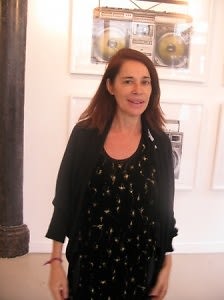
Christiane Celle is a sort of secret celebrity. The French-born founder of Calypso maintains from her Nolita lair a prominent art-fashion influence that extends to the Caribbean and Europe. But since splitting from the fashion label in 2008, she has focused on Clic, a gallery-bookstore combo that represents a die-hard relic able to maintain relevance in an ever tech-leaning world.
Celle is understatedly chic with a throaty French voice that heightens to a sing-song (a dead give-away of her Côte d'Azur provenance). Her demeanor, her manners--unaffectedly smooth, ceremonious--conjure up the aura of a Belle-Epoque salon maven. In a world where e-books and Kindles have infiltrated our reading habits, Celle's commitment to the book as artifact, to the beauty of the literary and artistic object, has allowed her to carve out a significant niche that bucks the digital consumer trend.
With a ready arsenal of photo-books, design titles, rare and limited editions, signed copies, her Centre Street store-front space is at once aesthetic treasure trove and bastion against a file-consuming, bibliophobic world with hard-to-find items and rotating exhibitions from the likes of Ron Galella, Gian Paolo Barbieri, and Victor Demarchelier.
The show "Three Boys From Pasadena: A Tribute to Helmut Newton Curated by June Newton" opens tonight at Clic, and during an interview with us last week at the gallery, Celle answered these questions.
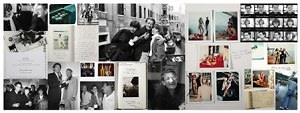
GofG: You had such a prominent role in the fashion world with Calypso: how do you think that part of your biography informs your taste in photography? Or did your love for the camera come first?
CC: "Before I was in Calypso I was a fashion stylist…So I moved to New York in 1984, and I started styling in '86. So I worked with a lot of fashion photographers like Arthur Elgort, Bert Stern, Sante D'Orazio, Norman Parkinson and other ones. Growing up as a kid, I liked fashion, but my first love before fashion was actually photography cause I grew up in the south of France in Cannes. Cannes is a bit more like the Hamptons scene…cause there are people coming from all over Europe and there’s a lot of money.
But growing up in Cannes, I was always like, ‘Oh my god it is too small- I need to see something else.’ So my passion was really photography, and I love books. But then when I started fashion and when I left Calypso, I knew I was not going to do another fashion company anyway. I did it before and because I was always more interested in photography I said, 'Wow, that’s what I should do next.'
GofG: Tell us more about your first interest into photography during your youth? It seems you were a bit reluctant behind the camera and enjoyed the art as a spectator. Which artists inspired you at that time?
CC: In Cannes I didn’t’ really photograph….but it was the time of Guy Bourdin, Helmut Newton, and Sarah Moon…So these photographers were always shooting between Cannes and Nice, Monaco—and I was very influenced, actually, by Guy Bourdin ads for Charles Jourdan for years. And I loved his aesthetic. He would show a pair of legs sticking out of, you know, nowhere…and at the end there would be a pair of shoes, and that was the advertisement. It was pretty different than what everybody was doing. So, you know, Guy Bourdin was, you know, one of my first loves but as for myself as a photographer...? I always carried a camera, but I was not, like, thinking , 'Oh, I want to be a photographer.'
The first one I had was a Nikon, but if you ask me any number I don’t remember. But the first, first camera I ever used, actually, was a Polaroid camera that my dad gave me when I was 13. And I remember, my brother and I kept shooting and shooting and shooting.
And what I loved about the Polaroid is you would snap a photo and get it right away. When I was 13…we would shoot everything: the dog, my brother, and then my dad was like, 'O.K., you’ve got to stop…' because in five seconds, you would finish the $10 roll of film. It’s very different than taking a photograph then going to a printer, having them print, you know, it was…for me, it was a revolution. Polaroid for me was an amazing discovery, because to be able to do a shoot and see right away what I shot and being very ADHD or very impatient—I had no patience--I really loved that.
Ultimately, I just wanted to work with photographers, and I’m very fortunate now because a lot of them have a book. When years ago, there no one had photography books, except the very classic photographer.
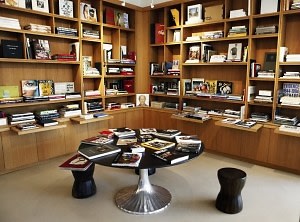
GofG: This little smattering of New York where Clic is located has seen such an evolution: can you run us through a little bit of that history and the neighborhood's trajectory since you arrived in the '80s?
CC: "I’d been living in that neighborhood actually since 1984. I arrived in the spring in 1984 in Nolita. It was not called Nolita, you know; it was part of Little Italy. But I moved here at 50 Spring…which was Spring and Mulberry in 1984. I went back to France and I went in St. Barths, but I definitely came back in '95 when I did Calypso here—cause Calypso started in 1992 in the Caribbean, '95 in the Hamptons, and '96 in Nolita when there was Cafe Gitane, Sigerson Morrison, and Calypso. There were almost no stores there. But today there are a bit too many, maybe.
When I moved here Rizzolli was on West Broadway for like 20 years. It was the most amazing bookstore I had ever seen. It was a huge brownstone townhouse. Very modern. And on weekends you would go there, and, you know, everybody would be there…reading and buying…People like Marc Jacobs, who was very young, would spent time there. And he was always there on weekend…He was selling his clothing to Diane B..But it was always like people were fascinated. And after they left West Broadway, it went out of business and in '89 I think and it was over. So, I think it’s important to have a place like that. But we notice a difference by bringing a lot of different authors, like Mark Seliger who is signing "Listen" in January.
What happened is the space [255 Centre Street] originally opened in October 2008 and it was a tiny bookstore on 189 Lafayette. I was waiting for the space to be built because, well, it is a long story—but this shop was not any retail store for over like 30 years. It was an office for an electrician. So everything was covered with fake marble and there were no windows, so we had to build everything…and now because the building is part involved in a sort of landmark preservation, it took us about 8 months to get a permit to do construction so I had a tiny little store and as soon as I got that store open I moved in here."
GofG: I understand you're headed to St. Barth soon to tend to your gallery location there: tell us about your upcoming artistic ventures down there.
CC: "We have actually a book signing and a show by Jean Pigozzi, who actually has a book that just came out--Catalogue Deraisonné. It includes about 30 years of photography. Jean’s family owns a car company called Simca, and it was a very interesting car and you know, so since he was little boy, he has been living that privileged life and his parents have a very big house in Cap d’Antibes, called Villa d’Orion. Cap d’Antibes is really close to Cannes, but because of the festivals, the rock stars, the Rolling Stones all used to go you know. He was always surrounded by all of these people and the good thing was: he was not part of the paparazzi...he was friends with them so he was always there to take their photo, and he was always close to them. So we will sell the book and do a mini show: it's 15 photographs. There rest are uptown at Gagosian where they are showing 200 photographs. He has a lot of humor, so it’s, you know, Mick Jagger, but also like Henry Kissinger—he knew a lot of people.
He knows, I think everybody, and he’s a fun guy, and people always complain about the way he dresses, because he has pajamas then decided to do a fashion collection [LimoLand] because people are always like, ‘What are you wearing today?’ You, know, but that’s who he is: a bit eccentric.
He had a Ralph Lauren polo with a little logo, but then he use like flashy color—you know, he did like a Montcler type of jacket, but he did purple and yellow and green."
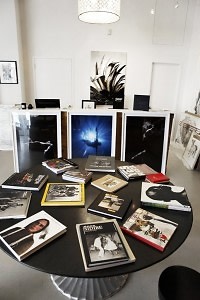
GofG: Your life certainly has no shortage of characters. You have an exhibition of Victoria Dearing photos presenting "Man on Wire" subject Philippe Petit: tell us about your early interaction with the tight-rope walker.
CC: "He used to be in Washington Square Park…he used to do juggling, he used to use his bike, he used to play like pick-pocket and run away with the money…he was a character. So, you know, I discovered him, and people were telling me this story about this guy who was on the Twin Towers, and I was like ‘How can that be possible?’ I knew there was that crazy guy who did it, but I never imagined it was the same guy who was in Washington Square Park years ago."
GofG: You certainly have a taste for fostering emerging talent. How did your relationship with Hasselblad Masters winner Lyle Owerko begin?
CC: “I met him actually in the gallery; it’s the first photographer I met in this bookstore. And Lyle came to see me, because he had done a book about September 11th…He said, “So do you want to sell my book?” I looked at the book and I thought it was a beautiful book. It’s a bit graphic, because, there is no retouching and everything is in there. You see people... I didn’t like that part, but I think it has really beautiful images of what happened. And he only did a thousand. Anyway, so, we talked, and I said, ‘Are you working on the Samburu project?' He had come back from Kenya and he had decided to shoot, you know, native people there…more like Richard Avedon cause he liked the background. And more of a tribal. But he did the pictures of the youngest to the elder like the way they live…
Then in April 2009, he told me, ‘I am working on something else.' His photographs that are here are from five years of researching all the people who contribute and used the boom box in New York in the 80s.”
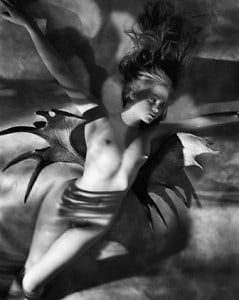
/George Holz, Claire With Moosewings/
GofG: In the digital age, do you think the artifact of a book is in danger?
CC: “Honestly, by what I see here, there are people that like Kindle and it’s great for chapter books, but for art books, those people who want to buy those art books are people who are really maniacs about books and collecting. They want to have a book on their shelf and treasure it. So I’m not worried about that. I think some people might like to flip through the book and see the book and you know, decide if they want to buy it or not…but I think people will like photography books or art books. I am like that; I need to have it, you know…like, I need to own it. I know it’s very strange. But in music : same thing. You know, we can buy and download things…but I like to have the CD, I like the work on it. And I like to look at it…and some people still, thank God, buy the CD, because you want to have the real, tangible work. I was obsessed as a kid with all the album covers. And I think some of the cover art is as interesting as the music for me. I like Raymond Pettibon.
I also think because of the trend in the new digital photography, I think all of the vingtage prints and everything are going to go for a fortune. Like, it's Richard Avedon. But the auction in Europe I think is $800,000 for a print of Richard Avedon.We have requests. A few days ago someone wanted Ron Gallela; they wanted a vintage print. Some people are very specific and think there is going to be a big demand of really authentic work, because that's precious. All the young people are going into the digital stuff, because they don't care. But the real collector, they will always want the vintage and the real original. That's the value."
[Images courtesy of Clic]

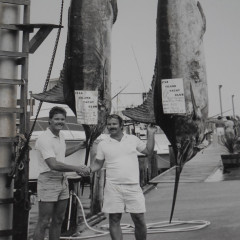
.jpg)
.jpg)
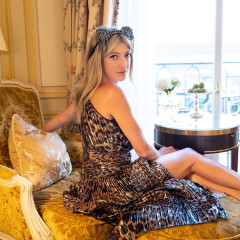
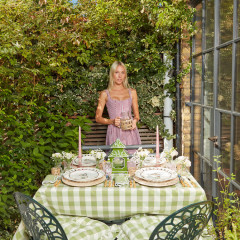
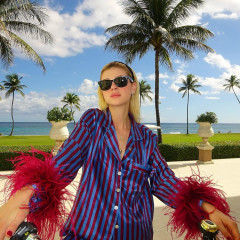
.jpg)
.jpg)
.jpg)
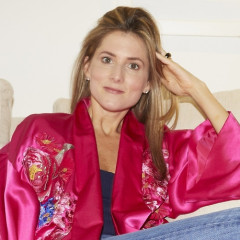



.jpg)